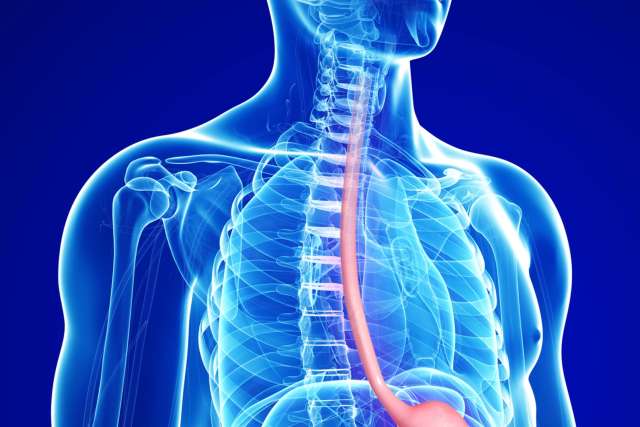Dear Doctors: I recently read about a woman complaining that her granddaughter eats very slowly. It brought to mind the condition I have called Schatzki's ring, which is a restriction in the esophagus. I wonder if the granddaughter may have a similar problem. Could you discuss Schatzki's ring?
Dear Reader: The rate at which someone eats is often associated with appetite. If you're famished or having something delicious, you may wolf it down. When you're not that hungry, or if the food isn't great, you might just pick at your plate. For some people, though, the mechanics of eating also come into play. These can be issues with the jaw, which affect opening the mouth, or dental problems that interfere with biting or chewing. Getting the contents of the mouth to the stomach for digestion can also play a role. It's a process we take for granted with every swallow, yet it's surprisingly complex.
Let's say it's a morning bowl of cereal. A spoonful of solids and liquid, which has been maneuvered into the mouth, is ground up by the teeth. Swallowing causes the tongue to push the food into throat. There, a small flap of tissue known as the epiglottis covers the windpipe. That diverts the mouthful away from the airways and ensures it heads for the esophagus. This is the hollow, muscular tube that connects the throat to the stomach. With a series of coordinated contractions, the esophagus delivers the food to the valve at the entrance to the stomach.
Several diseases and disorders can affect the esophagus. These include Schatzki's ring, the condition you are living with. As you say in your letter, Schatzki's ring is a restriction in the esophagus. More specifically, it is a circular band of membrane that develops on the organ's interior surface.
Located just above the junction with the stomach, a Schatzki's ring is made up of the same mucosal tissues that line the esophagus. It is not associated with cancer, but it is strongly associated with hiatal hernia. This is when the upper portion of the stomach penetrates the surrounding muscles. Acid reflux and heredity are also believed to play a role.
The narrowing of the esophagus caused by a Schatzki's ring can make it difficult to swallow. When someone with the condition eats or drinks, it can cause a sensation of something being stuck in the throat. Eating or drinking slowly, with small bites or sips, is one of the coping mechanisms used by people with the condition. In more severe cases, a complete blockage of the esophagus can occur.
Treatment depends on each person's symptoms. For those with a hernia, a repair is advised. Severe blockage is addressed by physically dilating the esophagus at the constriction point. Acid-blocking medications, which can prevent relapse, are also often prescribed. People are advised to eat slowly, take smaller bites and chew thoroughly.
While there is no specific demographic for Schatzki's ring, it is most common in adults 40 years of age and older. It is rare in children. If the granddaughter in your question is a child, she may just be a naturally slow eater.
(Send your questions to [email protected], or write: Ask the Doctors, c/o UCLA Health Sciences Media Relations, 10960 Wilshire Blvd., Suite 1955, Los Angeles, CA, 90024. Owing to the volume of mail, personal replies cannot be provided.)





